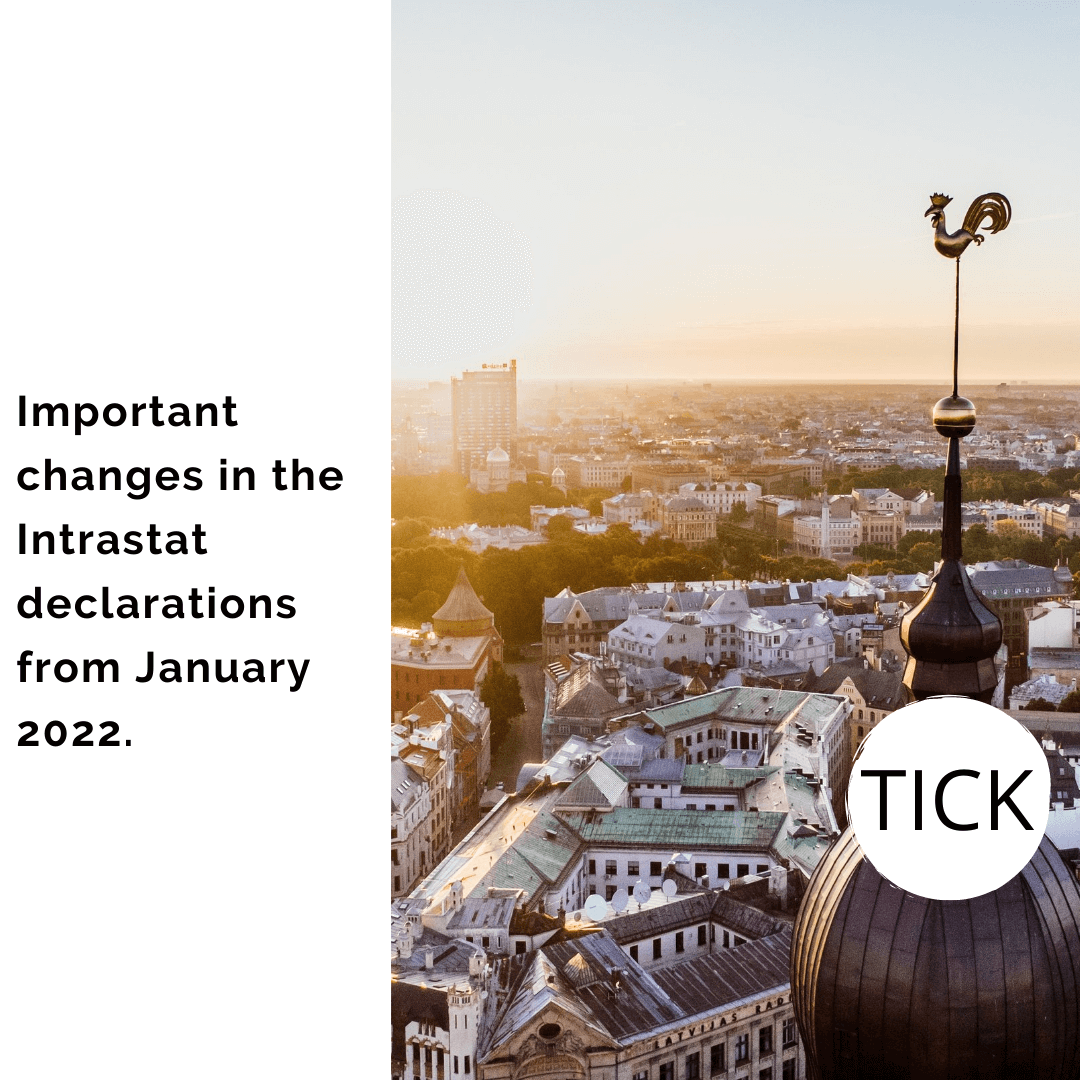The new “Regulation on European Business Statistics” entered into force on January 1, 2022. From that date, Intrastat Dispatches declarations across the European Union (EU) will require two additional statistical information. The new data items to provide are:
- Partner’s tax identification number
- Country of origin
Some EU Member States have already requested this information by choosing to collect it or have implemented new requirements early.
Under the new regulation, in EU Member States where these two data elements are not yet collected, companies will have to start reporting them from January 2022 in their shipping declarations. These export / shipment data will be shared by Eurostat between EU Member States. We hope that this additional data collected on the export / shipping side will reduce the burden of data collection on the import / acquisition side.
Partner’s tax identification number
It is a combination of the country code and the VAT number of the buyer / recipient of the goods (importer). This will be the VAT registration number of the customer to whom the goods are shipped. The VAT number must be provided with the two-digit alpha code of the EU Member State to which the customer belongs, followed by his VAT number.
While most EU Member States use the ISO2 country code prefix, please note that VAT registration in Greece is always preceded by the code “EL” and not “GR”.
For cross-border shipments where the Triangulation simplification applies and the invoiced customer is located in a different EU Member State than the one to which the goods are shipped (place of shipment), the VAT number of the person receiving the goods should be used. Therefore, it is recommended that you identify the relevant transactions and request, obtain, confirm and retain the recipient’s VAT registration number of the goods at the place of delivery so that it can be properly reported on your Instrastat declaration. If this is not known, then the VAT number of the invoiced customer should be used as a reserve.
Use code QV999999999999 when sending goods to individuals or businesses not registered for VAT.
Country of origin
The country of origin (CoO) is the country where the goods shipped were originally fully manufactured. In the case of goods produced in more than one country, the PEC will be the country where the last significant economic transformation took place. This means the country where the goods have recently undergone a treatment resulting in a change to the Harmonized System Commodity Code at Level 4 (HS4). Any work on the goods that does not change the HS4 commodity code, e.g. splitting shipments or repackaging the goods, will not be sufficient to affect the CoO of the goods.
In the Intrastat system, you must provide the appropriate ISO 2-digit country code. Note that for Intrastat reporting, goods manufactured or produced in Great Britain (England, Scotland and Wales) should be classified as XO, while those manufactured or produced in Northern Ireland should be classified as XI.
Intrastat between Great Britain and the EU
From 1 January 2022, Intrastat declarations will only need to be submitted for goods moving between Northern Ireland and the EU. Movements between the UK (England, Scotland and Wales) and the EU will no longer be Intrastat due to Brexit.
The new Northern Ireland Intrastat exemption thresholds from 1 January 2022 will be:
- £ 500,000 for arrivals (NI import / acquisition from EU)
- £ 250,000 shipping (NI export / EU shipment)
- The delivery time threshold will remain at £ 24,000,000


